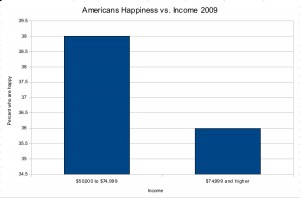Posted by Elena del Valle on September 2, 2009

Frank Cooper, CMO of portfolio brands, Pepsi-Cola North America Beverages
Photo: Pepsi-Cola North America Beverages
Americans remain optimistic in spite of the recession and high unemployment, according to a recently released Pepsi Optimism Project (POP) national telephone survey. Ninety six percent of respondents were optimistic about their future. Those surveyed seemed to be more hopeful this year than in 2008 about issues relating to: Relationships with family and friends (91 percent versus 81 percent), overall well-being (88 percent versus 84 percent), health (86 percent versus 78 percent), finances (77 percent versus 64 percent), and chances of finding love (70 percent versus 61 percent).
“In 2008, our POP research informed us that there was a collective and contagious sense of optimism pervading the youth mindset. This year we see that same spirit of optimism is not only pervasive among the millennial generation but across all demographics,” said Frank Cooper, chief marketing officer of portfolio brands, Pepsi-Cola North America Beverages. “Representing a brand that has become synonymous with the spirit of youth and optimism, those of us at Pepsi are continuously encouraged by the resilience of Americans, across all ages, races, sex, location and economic background, people are embracing optimism, even in the most uncertain of times.”
The survey found African-American respondents were more optimistic than other ethnic groups. While 72 percent of African-Americans who responded to the survey were significantly more likely than whites (53 percent) or Latinos (60 percent) to expect more good things to happen to them than bad; and 62 percent of African-Americans were significantly more likely to associate the word “necessary” with optimism than whites (51 percent) and Latinos (52 percent). Wall Street types were also more optimistic than regular workers; 64 percent of city dwellers indicated they are more likely to be optimistic about an economic recovery than their counterparts (53 percent).
As part of the Pepsi Optimism Project, researchers surveyed 1,280 people 18 and older in the United States between June 11 and June 15 and between June 18 and June 22, 2009. The ongoing project tracks the national level of optimism on a quarterly basis, by measuring the national state of optimism via a composite score. Analysts determine the national optimism level by scoring and totaling American’s responses to survey questions about their overall sense of optimism, their sense of optimism about their personal lives, their optimism about the world and their optimism about the future.
The Optimism Survey was conducted on behalf of PepsiCo by StrategyOne, a New York strategic consulting. In addition to random digit dialing to ensure national representation, and computer-assisted telephone interviewing for optimal accuracy, a supplementary sample of Hispanics (N=186) and African-Americans (N=170) were surveyed.
The Pepsi-Cola North America Beverages (PCNAB), a division of PepsiCo, portfolio features Pepsi, Mountain Dew, Sierra Mist and Mug soft drinks. According to promotional materials, PepsiCo, has one of the largest roster of billion-dollar food and beverage brands, including 18 different product lines that each generate more than $1 billion in annual retail sales in over 200 countries. According to promotional materials, PepsiCo employs 198,000 people and in 2008 it generated more than $43 billion in revenues. A public relations representative of the company declined to share any information on the ethnic breakdown of customers, employees or their product preferences.
“Happy for No Reason” audio recording

Presenter Marci Shimoff, author, Happy for No Reason
What: An audio presentation by Marci Shimoff and Q&A with Marci Shimoff and HispanicMPR.com audio program host Elena del Valle about finding happiness.
Available exclusively on HispanicMPR.com!
Click here to listen to a short interview with Marci
Click here for more information on “Happy for No Reason” audio recording with Marci Shimoff
Posted by Elena del Valle on August 24, 2009

Humane Society of Greater Miami Alley PSA campaign
Photos, video: Accentmarketing
There are 1.3 million cats and dogs in Miami-Dade County. While animal abuse and abandonment have been a problem for many years, with the recession and foreclosure glut the number of abandoned animals in that city has tripled, according to the Humane Society of Greater Miami. Organization representatives indicate that pet owners often don’t realize the implications of allowing their pets to breed, and the accompanying responsibility of finding homes for the whole litter.
In the hope of bringing attention to these issues, the Humane Society of Greater Miami with the support of Accentmarketing, unveiled a new $100,000 (estimated costs of production) Spanish language public service advertisement (PSA) campaign with Alley, a TV spot, and Studio Shot, a print ad. A radio ad is planned for release next month. They plan to distribute the ads to local Spanish language media. Scroll down to watch the video ad.
The TV ad features a lone baby dressed in a kitten costume crawling on the ground in a dark alley while a voice over discusses pet abandonment and sterilization issues on behalf of the Humane Society of Greater Miami Adopt-A-Pet program. As the camera pans out, viewers are meant to see that the baby represents an abandoned kitten, sitting by himself in a dirty and empty alley, lost and bewildered.
The spot creators want viewers to understand that just like babies, pets are part of their family. They want pet owners to realize that it’s their responsibility to spay and neuter their pets to help reduce the animal overpopulation problem in Miami-Dade County. To do that the Accentmarketing team focused on creating a strong correlation between how sterilizing a pet can result in saving thousands of animals from ending up homeless on the street or in a shelter.

Ana Maria Montero, account group director, Accentmarketing
“In this day and age where we see such unjust animal cruelty in our community, the Accentmarketing team felt passionate about instilling responsibility among current and future pet owners to spay and neuter their pets,” said Ana Maria Montero, account group director, Accentmarketing in a press release. “We are proud to be able to support the Humane Society of Greater Miami’s mission and contribute towards inspiring pet owners in our community to be more responsible for their pets.”
Studio Shot is a print interpretation of the Alley TV spot. The image of the baby wearing the kitten costume looks like a professional baby studio portrait. The headline reads: “Tu mascota es como un hijo. Sus crías también deberían serlo” (Spanish for Your pet is like your child. Their offspring should be as well.). The goal is to make pet owners see the baby like a pet, one of thousands of abandoned pets in the streets as a result of unsterilized pets. Most of those abandoned pets are likely to die, according to the organization.
The TV spot and print ad were shot in Los Angeles, where the Production House, D’Avant-Garde is located. Although the TV spot was shot in one day, pre-production and post-production of the TV and print ads required two months.
Twenty people donated their services pro bono to the Humane Society Spanish language PSA campaign. The Accentmarketing team members that led the campaign were: Luis Puerta, creative director and copywriter; Junior Jimenez, senior art director; Rudy Leschhorn, executive producer; and Ana Maria Montero. The following also supported the project: Pascui Rivas and Francisco Pugliese, media directors at D’Avant-Garde, Tom Marvel as director of photography, Guillermo Sauceda for the voice over, and digital retouching by Artistic Image.
The Humane Society of Greater Miami Adopt-A-Pet is a limited admit, adoption guarantee facility, dedicated to placing every dog and cat in their care into a loving home, and promoting responsible pet ownership and spay/neuter programs. Animals admitted into their shelter are safe from euthanasia for as long as it takes to find someone to adopt them. The organization houses 250 pets on a daily basis and spays or neuters 12,000 animals a year in its two clinics.
Established in 1994, Accentmarketing is a Hispanic marketing communications agency with offices in Miami, Los Angeles and Detroit. Clients include the American Heart Association, Farmers Insurance, GobiernoUSA.gov, Chevrolet, the California Association of Realtors, Kaiser Permanente, Brown-Forman and the U.S. Navy.
Posted by Elena del Valle on July 20, 2009

An agricultural field
As we face one of the deepest recessions in our young nation’s history and record unemployment it’s hard to believe there was so much talk about and concern with immigration in the last years. With many families facing financial problems, foreclosures, business closures and job loss most people’s energy is focused on worrying about issues that affect them tangibly and directly rather than possible new arrivals, undocumented or documented.
Gone are the days of plenty. Today many live frugally and contemplate the increasingly fashionable and very practical transumerism (renting rather than buying non essential items). While there surely are still migrant workers in agriculture and construction, among other industries, the number of immigrants that cross the United States southern border, for example, has declined noticeably since our country’s financial woes became pronounced. As the number of jobs declines, the number of workers migrating north also drops (see Mexican immigration declined sharply last year).
Doors that once stood mainly open to immigrants in the United States and other industrialized nations are less open, relying on heightened permit processes and not so friendly legislation to keep aspiring visitors at bay. For example, the Employ American Workers Act, part of the fiscal stimulus bill, places stricter conditions than in previous years; and on companies receiving financial support from the government that want to hire skilled foreigners under the H-1B visa program.
This, and the weak economy, has caused some American banks and other financial-services firms to withdraw job offers to foreign-born graduates of American universities and postgraduate programs. And, according to a recent article in The Economist, some people who work in the United States are finding it harder than in the past to renew their residency permits.
In some places the attitudes toward migrant workers have toughened or worsened. Xenophobia has a fan base (listen to interview with Mark Potok of the Southern Law Poverty Center about anti-immigrant hate crimes in America). We are not alone as a nation. Countries like South Africa, Spain and Ireland have seen bouts of violence against foreigners. In Northern Ireland, Romanian workers have been attacked; in Australia, Indian students have been the targets of displeased citizens participating in manifestations; while in South Africa anyone thought foreign and working for lower wages than the locals was at risk of bloody and at times deadly attacks last year.
“Moving Beyond Traditional Media Measurement: measuring conversations and social media” audio recording

Presenter Katie Delahaye Paine, founder, KDPaine & Partners
Find out about
- Issues affecting online public relationships today
- Testing relationships as part of a survey
- Measuring ethnic group relationships
- Measuring foreign language communications in a similar ways to English
- Biggest challenges measuring conversations and social media
- Measuring online relationships with little or no money
Click here for information on “Moving Beyond Traditional Media Measurement”
Posted by Elena del Valle on July 1, 2009
By Vanessa Bravo
Intern, HispanicMPR.com

Vanessa Bravo
The three sections users prefer are guest articles, articles authored by Elena del Valle and podcasts
Happy birthday! Hispanic Marketing and Public Relations (HispanicMPR.com) is reaching its fourth anniversary and is growing fast. What started four years ago as a small forum to share ideas about the book Hispanic Marketing & Public Relations (Poyeen Publishing, $49.95) has grown into a fully developed website with a wealth of information about business topics in general and the Hispanic market in particular.
Today, HispanicMPR.com offers visitors dozens of guest articles, podcasts, articles authored by Elena del Valle (host and editor of the website), presentations, videos, and job ads. The website has become a useful tool for business people and entrepreneurs interested in topics like marketing, public relations and business development. It has grown a loyal pool of users: just the e-mail newsletter is received by more than 3,500 subscribers.
Click here to read the complete article
Posted by Elena del Valle on May 27, 2009

Americans Happiness vs Income 2009 - click to enlarge
How many Americans are happy today and what makes them happy? Good jobs? A high income? Family and friends? Researchers set out to find the answers to these questions by polling 2,401 adults in the United States online between April 13 and April 21, 2009. The results were a little surprising given the current state of the economy and the popular belief that money is the greatest source of happiness of all.
A little more than one third, 35 percent, of Americans said, last year and this year, that they are very happy in response to a Happiness Index online poll. Surprisingly, income did not equate to happiness among survey respondents. The group with the highest happiness index (39 percent) had an income between $50,000 and $74,999. The next group, with a 36 percent happiness index, earned $75,000 and higher.
In spite of the economic slump, African Americans and Hispanics who responded this year were happier than last year’s respondents. Last year, 35 percent of African Americans were happy as were 32 percent of Hispanics. This year, 41 percent of African Americans said they are happy and 36 percent of Latino respondents said they are happy. According to a Harris Interactive spokesperson no further information was gathered about emerging minorities in the polling process.
The poll also revealed that women who responded are slightly happier than men (36 percent versus 34 percent); and married women respondents are happier than single women (38 percent versus 34 percent). The survey also indicates that those with a high educational level tend to be happiest: while 33 percent of individuals with a high school or lower education said they are happy, 36 percent of respondents with some college and college graduates are happy, and 39 percent of those with a post graduate education are happy.
More Democrats were happy this year (from 33 percent to 36 percent) and fewer Republicans (39 percent to 37 percent). The researchers believe the changes may be related to the election of President Obama.
Harris Interactive conducts custom market research in North American, European and Asian offices and with the help of a network of independent market research firms.
“Happy for No Reason” audio recording

Presenter Marci Shimoff, author, Happy for No Reason
What: An audio presentation by Marci Shimoff and Q&A with Marci Shimoff and HispanicMPR.com audio program host Elena del Valle about finding happiness.
Available exclusively on HispanicMPR.com!
Click here to listen to a short interview with Marci
Click here for more information on “Happy for No Reason” audio recording with Marci Shimoff
Posted by Elena del Valle on May 6, 2009
By Jon Glass, M. Ed.
Doctoral candidate
Psychology Department
Gannon University

Jon Glass, M. Ed.
Over the past thirty years, social scientists have expanded our understanding of the role that fathers play in child development. Prior to this time, researchers looked almost exclusively at mothers; it was as if fathers’ mere presence, or lack thereof, was enough. Not surprisingly, current data suggests that fathers play a critical role in the family. Positive paternal involvement leads to improved school performance, positive self-esteem, better sibling relationships, and improved mental health outcomes for children. Furthermore, when fathers remain responsible for, engaged with, and accessible to the family, marriages are stronger and pooled financial resources lead to a higher standard of living. Thus, fathers have both a direct and indirect influence on family relationships and stability.
Click here to read the complete article
“Latino Family Dynamics” audio recording


Brenda Hurley and Liria Barbosa
Discuss
- Latino purchasing habits and products they favor
- Latino family characteristics
- Latinos and extended families
- Division of duties, responsibilities within the family
- Who is the decision maker in the Latino family
- Who is the information provider in the Latino family
Click here to find out about Latino purchasing habits and “Latino Family Dynamics”
Posted by Elena del Valle on April 22, 2009
By Fernando Torres-Gil, M.S.W., Ph.D.
Associate dean of Academic Affairs
University of California-Los Angeles

Fernando Torres-Gil, Ph.D.
Photo: Fernando Torres-Gil, Ph.D.
America is witnessing a historic moment: the convergence of aging Baby Boomers with a burgeoning Latino population. That fact draws our attention to the people who fall into both categories: the Latino Baby Boomers, a population that is largely invisible.
Given that key issues such as Social Security, Medicare and pension reform are high on voter concerns in this election year, it is imperative to know as much as possible about this group. My own research thus far suggests that they are especially vulnerable, and the more we know about them, the better our political leaders will be able to address this unforeseen dilemma.
Click here to read the complete article
“Latino Family Dynamics” audio recording


Brenda Hurley and Liria Barbosa
Discuss
- Latino purchasing habits and products they favor
- Latino family characteristics
- Latinos and extended families
- Division of duties, responsibilities within the family
- Who is the decision maker in the Latino family
- Who is the information provider in the Latino family
Click here to find out about Latino purchasing habits and “Latino Family Dynamics”
Posted by Elena del Valle on April 15, 2009
By Barbara L. Allan
CEO, SRA Research Group Inc.

Barbara Allan
Photo: SRA Research Group, Inc.
SRA Research Group, Inc. (SRA) has found, in the 15 plus years we have been conducting primary research regarding Hospice that most people have heard of it. Despite this, many don’t really know what it means or what it provides. This is because Hospice falls into the category of “I don’t need it now so I don’t need to know more about it.” This category of people simply have no desire to learn more.
Once a family comes to grips with the realization that a loved one may require Hospice care, the door opens. However, we have found the door does not open as wide for Hispanics as it does for white non-Hispanics.
Click here to read the complete article
Listen to Cesar Melgoza discuss
“Changing Latino Landscape” audio recording

Presenter Cesar Melgoza, managing director, Latin Force Group
Find out about
• How demographic, social, political and economic factors affect Latinos
• Number of Hispanics in U.S.
• Hispanics as a percent of the mainstream population
• Number of Puerto Ricans in Puerto Rico
• Hispanics, including Puerto Rico, as a percent of U.S. mainstream
• Number of Asians and African Americans
• Estimated size of Hispanic market by 2012
• Percentage growth of new Hispanics per year
• Number of counties where Latinos are majority
• Areas of significant Latino growth
• Area of U.S. with a 950 percent Latino growth
• Role of acculturation
• Hispanicity segmentation
Click here for information on the Changing Latino Landscape
Posted by Elena del Valle on April 8, 2009
By Alejandro Alvarado Ph.D.

Alejandro Alvarado
Photo: Alejandro Alvarado, Ph.D.
My relationship with the Hispanic media started in 1995, as a member of a group of journalists that broadcasted news to Latin America through Telenoticias, a venture that combined investments from Reuters, Telemundo, Grupo Clarín and Atena 3; and that later became CBS Telenoticias and Telemundo International1.
That was the beginning of my immersion and acculturation into the values of journalism in a democracy where freedom of expression prevails. It was also the catalyst for my connections with journalists from all over Latin America and Hispanics born in the United States with strong ties to their Latin roots. This experience was my key to understanding this fascinating phenomenon called the Hispanic media.
Working in Latin American broadcasting based in the United States, I understood the challenging situation in which Hispanic journalist live, having to be experts in both the United States and the Caribbean, Mexico, Central and South America.
Click here to read the complete article
“Best in Class Hispanic Strategies” audio recording


Presenters Carlos Santiago and Derene Allen
-
Find out what makes 25 percent of the top 500 Hispanic market advertisers out perform the remaining companies
-
Discover what questions to ask, steps to take to be a Best in Class company
Click here for more about “Best in Class Hispanic Strategies” audio recording
Posted by Elena del Valle on April 1, 2009
By Georgia Hedrick

Author Georgia Hedrick
Kids need heroes here in the West. Real heroes. We need those who fight for justice and fairness and an honest day’s wage. Once upon a time, long ago, the movies or the music industry or sports were where the kids from the 50’s, 60’s, 70’s looked for role models. Those days are gone. We learned: those people were just icons to look at, and not heroes to imitate. They were never possible to imitate. In many cases, they should never have been imitated. Time taught us these facts.
March 31st was Cesar E Chavez’s birthday. Here is a man worthy of study, and imitation. Up from the heart of the West comes this hero. Struggling in a large family in Yuma of the Depression, always searching for work, the Chavez Family ‘followed the crops’. From Arizona through the length of California, they worked, they went to school, and they learned about injustice. Poorly paid, overworked, and feeling the discrimination of the wealthier classes, they persisted in being who they were, a family who would one day make a difference.
Click here to read the complete article.
“Best in Class Hispanic Strategies” audio recording


Presenters Carlos Santiago and Derene Allen
-
Find out what makes 25 percent of the top 500 Hispanic market advertisers out perform the remaining companies
-
Discover what questions to ask, steps to take to be a Best in Class company
Click here for more about “Best in Class Hispanic Strategies” audio recording



























